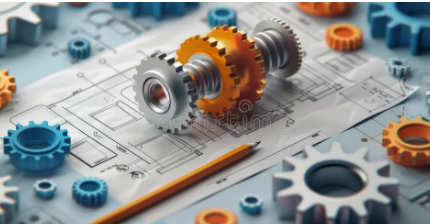Every successful engineering project, whether it’s constructing a bridge, launching a satellite, or designing a sustainable skyscraper, follows a structured pathway from conception to completion. Understanding the distinct phases of an engineering project is crucial for delivering results that meet specifications, budgets, and deadlines. Let’s take a detailed look at how an engineering project evolves — from initial ideas to a fully realized structure.
1. Conceptualization and Feasibility Study
The journey of an engineering project begins with an idea — a need to solve a problem or create something new.
During this first phase:
- Needs Assessment takes place to define what the project must achieve.
- Preliminary Research explores potential solutions, technologies, and challenges.
- Feasibility Studies are conducted to evaluate economic, technical, environmental, and legal viability.
At this stage, stakeholders ask key questions like:
- Is the project technically possible?
- Will it deliver value?
- What are the risks and potential returns?
This phase results in a go/no-go decision based on data-driven analysis.
2. Preliminary Design and Planning
Once the project is deemed feasible, engineers move into the preliminary design phase.
Key activities include:
- Defining project scope: Clarifying project boundaries, deliverables, and constraints.
- Creating initial schematics: Rough drawings or models to visualize basic structures and systems.
- Cost estimation and budgeting: Preliminary financial planning to secure funding.
- Setting project timelines: High-level scheduling to map out major milestones.
The goal here is to translate the initial concept into a structured plan that sets the groundwork for detailed design work.
3. Detailed Design and Engineering
This is where ideas become highly detailed, actionable blueprints.
During the detailed design phase:
- Technical drawings are created, specifying dimensions, materials, and processes.
- Simulations and modeling are run to predict system behavior under various conditions.
- Risk analysis is performed to identify and mitigate potential design flaws.
- Procurement specifications are drafted for the materials and equipment needed.
Multidisciplinary teams — civil, mechanical, electrical, environmental engineers — work collaboratively, ensuring every element fits together seamlessly.
Approval at this stage is critical before moving to construction, as changes later can be costly and time-consuming.
4. Procurement and Supply Chain Management
With the designs finalized, the project enters the procurement phase.
This involves:
- Selecting contractors and vendors through bidding or direct negotiations.
- Purchasing materials, equipment, and services required for the build.
- Logistics planning to ensure timely delivery of components.
Efficient procurement is vital because delays in material acquisition can cause cascading delays in the entire project timeline. Project managers must ensure transparency, compliance with contracts, and cost control throughout this phase.
5. Construction and Implementation
Construction — the most visible and labor-intensive phase — brings the designs to life.
Key elements include:
- Site preparation: Clearing, excavation, and foundational work.
- Structural construction: Erecting the framework, walls, roofing, and core systems.
- Installation of systems: Electrical, plumbing, HVAC, and other mechanical systems.
- On-site quality assurance and inspections: Ensuring every element meets design specifications, safety standards, and regulatory codes.
Communication between the engineering team, contractors, and construction managers is critical. Unexpected issues often arise, requiring quick decision-making and flexibility.
6. Testing and Commissioning
Before the project can be declared complete, it must undergo rigorous testing:
- System functionality tests ensure everything operates as intended.
- Load testing confirms structural strength and integrity.
- Environmental and safety inspections guarantee compliance with all legal standards.
Commissioning also includes training the end-users or operators, providing manuals, and handing over detailed documentation to ensure ongoing safe operation.
7. Project Close-Out and Handover
With testing complete and all systems operational, the project enters the final phase:
- Punch lists are created to document minor tasks or fixes still needed.
- Final inspections are conducted.
- Official certifications are obtained if required (e.g., occupancy permits, regulatory approvals).
- Formal handover delivers the project to the client, along with warranties, maintenance schedules, and operational guidelines.
A post-project review is often held to identify lessons learned, helping future projects benefit from past experience.
Key Factors for Success Across All Phases
To successfully navigate every phase of an engineering project, teams must focus on:
Strong Project Management
Coordinating complex tasks, managing timelines, budgets, and teams requires skilled project managers.
Clear Communication
Effective collaboration among diverse stakeholders ensures smooth transitions between phases and quick resolution of issues.
Risk Management
Proactively identifying and mitigating risks prevents small problems from becoming major obstacles.
Continuous Quality Assurance
Ongoing inspections, tests, and adjustments throughout the project maintain high standards and prevent costly rework.
Sustainability and Innovation
Incorporating green technologies and cutting-edge design strategies leads to smarter, future-proof projects.
Modern Tools That Support Engineering Project Phases
Technology plays a crucial role in managing today’s sophisticated engineering projects:
- Building Information Modeling (BIM): Allows real-time 3D design updates and conflict detection.
- Project Management Software: Tools like Primavera P6 or Microsoft Project streamline task tracking and reporting.
- Drones and Robotics: Support site surveys, inspections, and even construction tasks.
- AI and Predictive Analytics: Improve decision-making during design and planning phases.
These tools increase accuracy, efficiency, and collaboration at every stage.
Conclusion: From Dream to Reality
Engineering projects don’t happen overnight. They require careful planning, detailed design, efficient procurement, meticulous construction, and thorough testing.
Each phase builds upon the last, transforming an initial vision into a real-world solution that serves society — whether it’s a bridge that connects communities, a power plant that lights up cities, or a hospital that saves lives.
Understanding and respecting each stage of the process is key to delivering engineering projects that are not just completed, but successful, innovative, and enduring.
Would you also like a visual flowchart showing the phases for easy reference? 🚀
Also Read :
